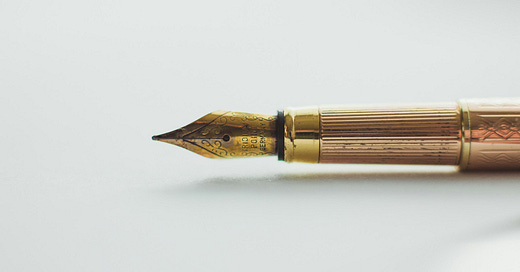‘Each life is an encyclopaedia, a library, an inventory of objects, a series of styles, and everything can be constantly reshuffled and reordered in every conceivable way.’
- Italo Calvino, Six Memos For The Next Millennium
Imagine an object. This can be something you own, or something you don’t. It can be something that you see every day, or an exquisite, rare object held by a museum, or indeed something that you have never seen in person.
Describe the object. Bring to life its materiality, its physicality, its embodiment. Use all your senses to do this (sight and touch of course, but also consider smell and taste even, as long as it is safe).
Now start to look beyond physicality to think of the object’s affect, symbolism and aura. What feelings does the object inspire? This is ‘affect’ rather than simple cause-and-effect. What associations do you make as you study the object more and more and start to internalise it? Can you try to capture the object’s message or meaning that extends beyond the physicality of the object? Can you see its force, its power to touch and perhaps change those who encounter it or the world around it?
Depending on your genre (poetry, creative nonfiction, fiction), you could follow the object through a set of memories you have. Or you could imagine the object being used for different purposes by different characters and/or at different times and places. You could think of yourself writing a kind of biography of the object.
Italo Calvino has spoken about the ‘magic’ of objects. Richard Teleky about how ‘objects make us feel less alone with our mortality.’ Edmund de Waal has written that ‘Stories and objects share something, a patina.’ Use any combination of these ideas to help you with your writing.
Further inspiration: Edmund de Waal, The Hare with Amber Eyes; W.H.Auden, ‘Objects’; Cynthia Ozick, ‘The Shawl’; Vahni Anthony Capildeo, ‘Investigation of Past Shoes’; Li-Young Lee, ‘Persimmons’; Alice Walker, ‘Everyday Use’, Annie Proulx, Accordion Crimes.
Jay Prosser teaches and researches Jewish studies, gender studies, and creative nonfiction at the University of Leeds. His short memoirs, which to date have explored his mixed-race heritage, have appeared in december magazine and the Tablet among other places. His first book, Second Skins: The Body Narratives of Transsexuality, was published by Columbia University Press in 1998. His most recent book, Loving Strangers: A Camphorwood Chest, a Legacy, a Son Returns, is published by Black Spring Press in 2024. His piece ‘Clips’ appears in Hinterland Issue 15.




